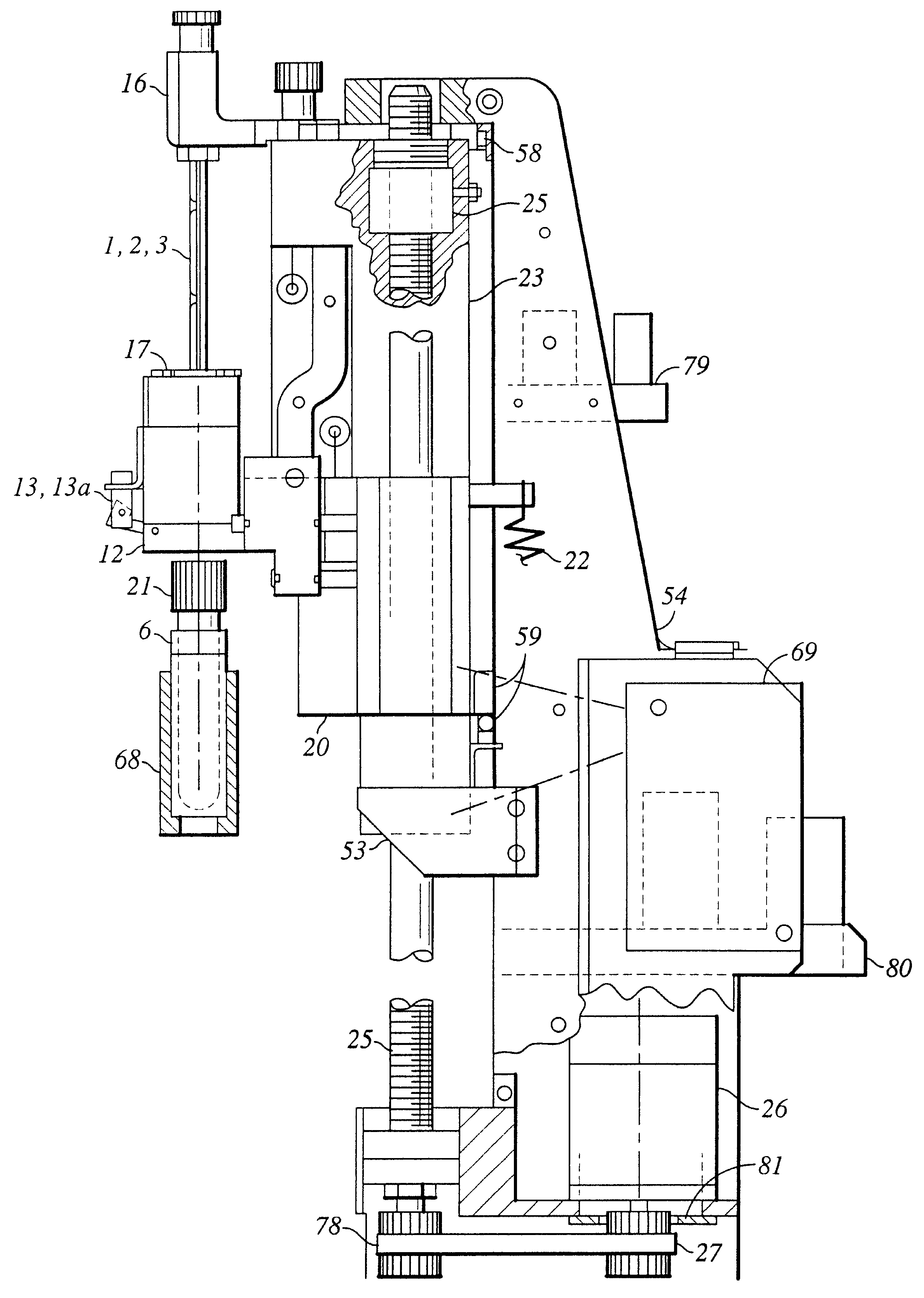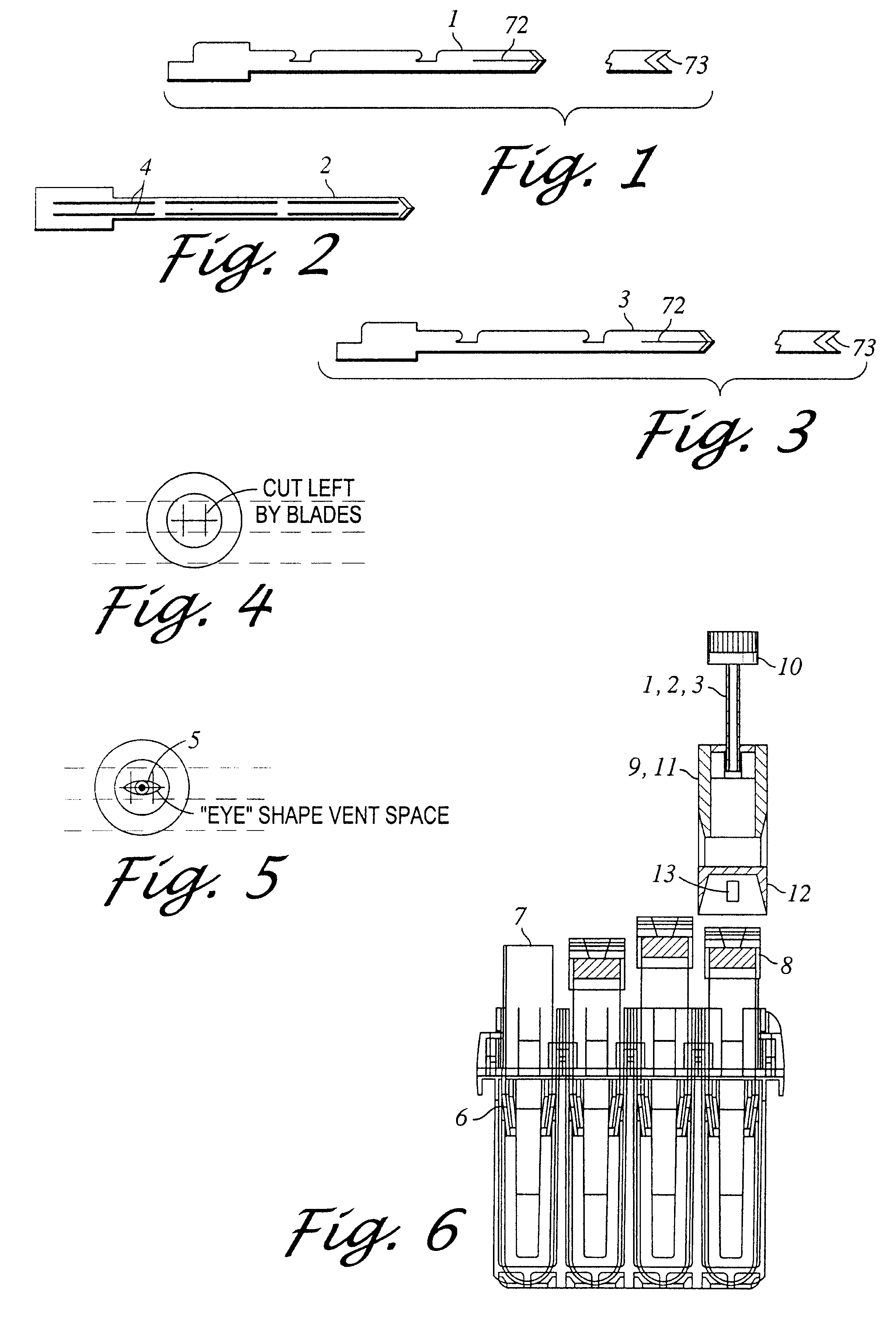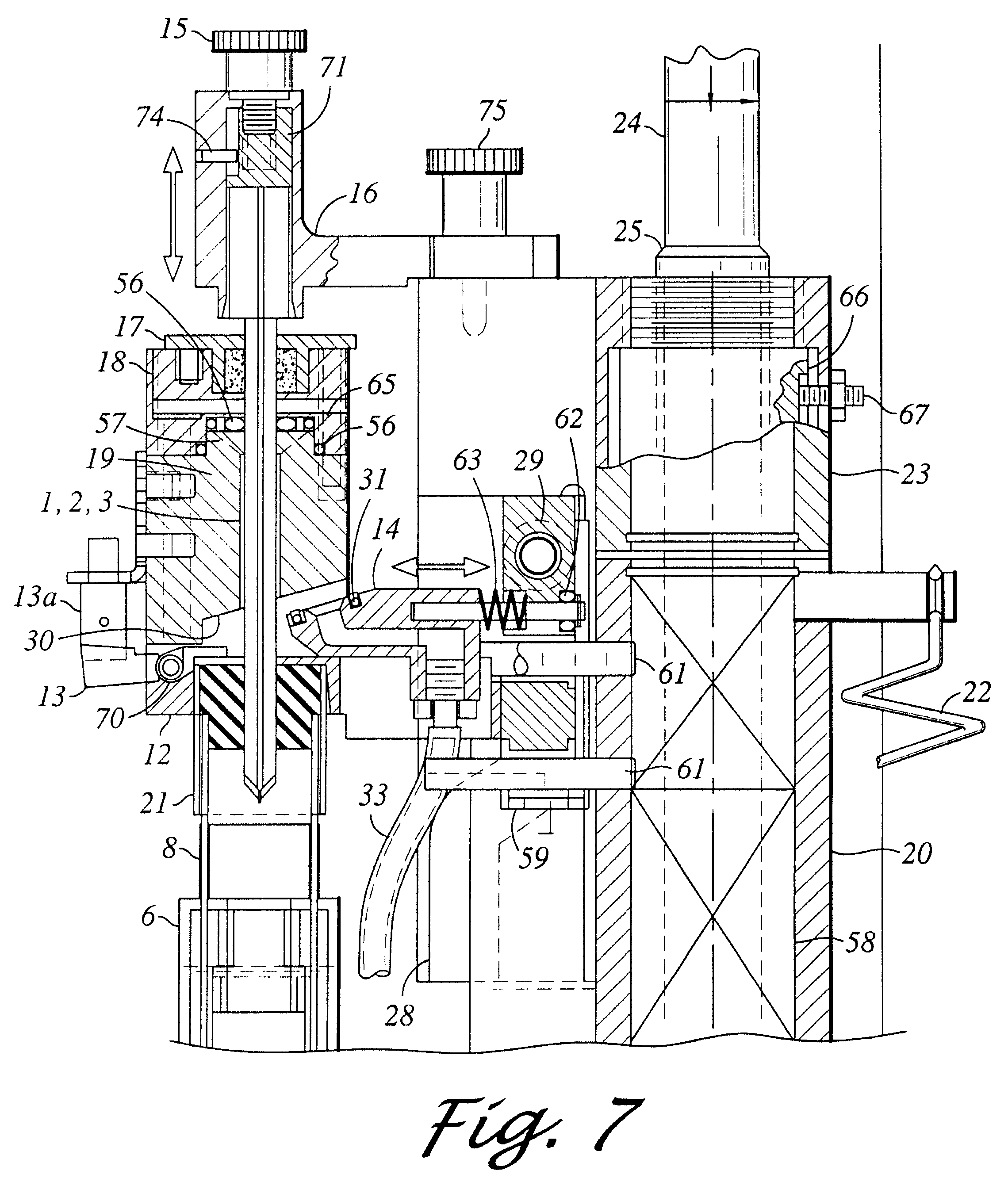Cap piercing station for closed container sampling system
a sampling system and cap technology, applied in the field of clinical chemistry sampling and analysis systems, can solve the problems of motion errors, stalling the stepper motor drive, and the type of piercing blade with an x-shaped cross-section
- Summary
- Abstract
- Description
- Claims
- Application Information
AI Technical Summary
Benefits of technology
Problems solved by technology
Method used
Image
Examples
Embodiment Construction
The present invention provides a piercing station for a closed container sampling system, such as a clinical chemistry analyzer.
Referring to FIGS. 1, 2, and 3, there are shown three blades for assembling the new piercing blades with an H-shaped cross-section, including a first cross blade 1, a center blade 2 and a second cross blade 3. The center blade 2 has two parallel rows of lengthwise slots 4 for insertion of the two cross blades 1 and 3, respectively. Cross blades 1 and 3 are locked into these slots 4 of the center blade to assemble the new piercing blades. When assembled, the center blade 2 is on a plane perpendicular to the two cross blades 1 and 3, such that the assembled piercing blades have a modified, generally H-shaped cross-sectional configuration. In this arrangement, the center blade 2 and the cross blades 1 and 3 reinforce each other, forming a composite blade assembly, which is stiff and strong enough for piercing thick rubber caps or stoppers of the sample contain...
PUM
| Property | Measurement | Unit |
|---|---|---|
| width | aaaaa | aaaaa |
| height | aaaaa | aaaaa |
| pressure | aaaaa | aaaaa |
Abstract
Description
Claims
Application Information
 Login to View More
Login to View More - R&D
- Intellectual Property
- Life Sciences
- Materials
- Tech Scout
- Unparalleled Data Quality
- Higher Quality Content
- 60% Fewer Hallucinations
Browse by: Latest US Patents, China's latest patents, Technical Efficacy Thesaurus, Application Domain, Technology Topic, Popular Technical Reports.
© 2025 PatSnap. All rights reserved.Legal|Privacy policy|Modern Slavery Act Transparency Statement|Sitemap|About US| Contact US: help@patsnap.com



